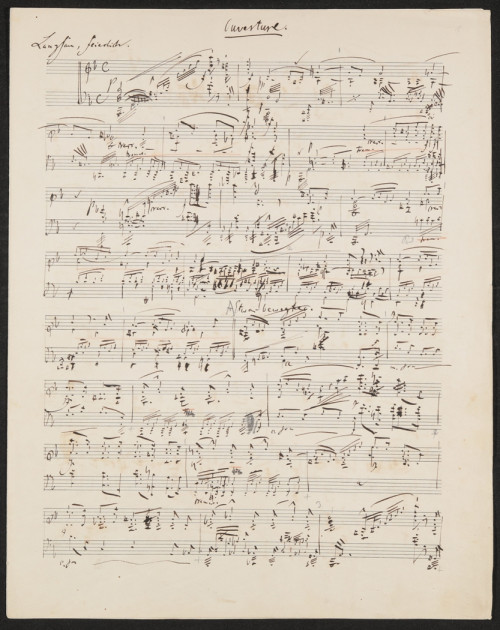The Romantic composer Robert Schumann was the son of a publisher. Having grown up virtually in the midst of an immense library, he read tirelessly from an early age. He was especially fascinated with the works of Jean Paul and Johann Wolfgang von Goethe, but authors of the Romantic generation were also among his favourites.
Schumann was long undecided on whether to become a writer or a musician, but his talents clearly lay more in composition than in poetry. He began his career as a composer of modern works for piano. In 1840 he published Dichterliebe (A Poet’s Love), a cycle of songs after Heinrich Heine, as well as his famous Liederkreis after poems by Joseph von Eichendorff. Both are considered highlights of the Romantic art of the song.
In 1844, Schumann accompanied his wife Clara — the most famous woman pianist of her time — on a concert tour of Russia. While Clara gave her celebrated performances, the composer immersed himself in Goethe’s Faust. He was especially captivated by the “Mountain Gorges”-Scene — the final scene of Part Two, with its mysterious ascent to ever higher spheres — and the salvation of Faust’s soul by the “Eternal Womanhood”.
No composer had yet ventured to set Goethe’s melodious and enigmatic lines to music. By the late summer of 1844, Schumann had completed the first scoring of the entire final scene of Faust II. Between 1849 and 1853 he added further scenes, thus ultimately creating a work of considerable magnitude. He wanted the interplay of text and music to conjure up a kind of imaginary theatre for the listener.
Schumann wrote the initial drafts of his Scenes from Goethe’s Faust on 123 sheets of sketch paper, which entered the holdings of the Freies Deutsches Hochstift in 2018. They contain Schumann’s handwritten transcript of the last scene, his initial musical notations with numerous corrections and changes, and his thoughts on the instrumentation and other aspects.
At first sight, these sheets appear unintelligible, perhaps even alienating. On closer inspection, however, they begin to speak to us, allowing fascinating insights into the composer’s workshop.
